Avoid the OCR Letter: Ensure Your College's OCR Compliance
In June 2010, when the idea of using electronic book readers in the classroom began
gaining ground, “Dear Colleague” letters from the U.S. Department of Education’s Office for Civil Rights (OCR) were
sent as reminders that emerging technologies must be in compliance with civil rights
laws prohibiting discrimination on the basis of disability.
Among the main issues then was with text-to-speech functionality, or lack thereof, which discriminated against those with visual disabilities—almost 230,000 students in postsecondary education alone. That letter was followed up with a Q&A to better explain the technology requirements.
Today, the issue encompasses any discrimination related to information technology. A 2011 whitepaper by the World Health Organization found that “the proliferation of web multimedia has outpaced accessibility initiatives... leaving many disabled students more disadvantaged than ever before.”
Your institution’s website must be accessible to all. This post outlines everything you need to know about OCR compliance, including:
- What is OCR?
- What is OCR compliance?
- What is an OCR letter?
- What your institution can do to stay OCR compliant.
- Resources for OCR compliance.
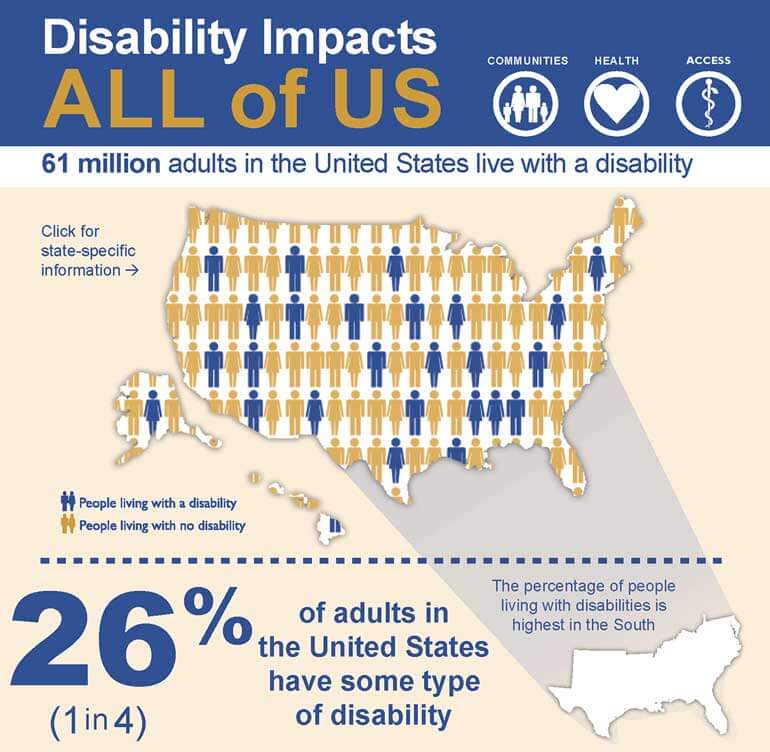
According to research from the Centers for Disease Control and Prevention, 26% of adults in the United States have some type of disability. OCR letters are sent out to ensure that those adults aren’t kept from accessing crucial online resources.
Infographic courtesy of the Centers for Disease Control and Prevention
Because higher education institutions must meet the ever-growing demand for digital accessibility, it is left to college and university web developers to grapple with the needed—but complicated—task of compliance.
What is OCR?
The U.S. Department of Education’s Office for Civil Rights (OCR) promotes and enforces equal access to education using federal civil rights laws. This includes:
- Title VI of the Civil Rights Act of 1964 prohibiting discriminating on the basis of race, color, and national origin.
- Section 504 of the Rehabilitation Act of 1973 outlawing discrimination on the basis of disability.
- Title IX of the Education Amendments of 1972, prohibiting discrimination on the basis of sex.
- Age discrimination as outlined in the Age Discrimination Act of 1975.
- The Americans with Disabilities Act of 1990, which prohibits disability discrimination by public entities, whether or not they receive federal financial assistance.
All state education agencies, including colleges and universities, must comply with the law. This encompasses admissions, recruitment, financial aid, academic programs, student treatment and services, counseling and guidance, discipline, classroom assignments, grading, vocational education, recreation, physical education, athletics, housing, and employment. No departments are excluded from the law.
These laws cover all accessibility issues from physical locations and in-person teaching methodologies to HIPAA and digital compliance. This latter issue impacts a college or university’s website and how users engage with the school digitally.
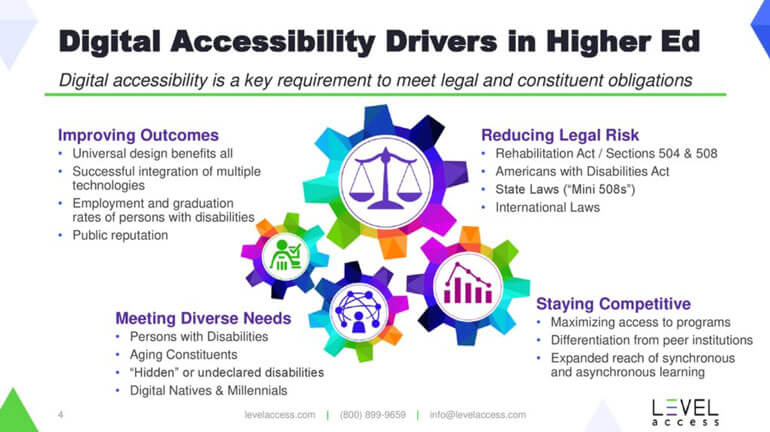
Digital accessibility and OCR compliance meets diverse needs, improves learning outcomes for all, keeps schools competitive, and reduces an institution’s legal risk.
Image courtesy of www.levelaccess.com
What is OCR Compliance?
The recent rise in OCR complaints stemmed from reports that school websites were almost impossible for people with disabilities to use. The department began sending letters and ultimately sued several schools over compliance.
“As schools, school districts, states, and territories turn to the internet as a way to provide relevant and up-to-date information to their audiences in a cost-effective manner, they must make sure they are not inadvertently excluding people with disabilities from their online programs, services, and activities,” said Catherine E. Lhamon, assistant secretary for civil rights, in a recent press release.
In initial audits, the OCR found that many of the websites had the same issues. These basic problems can make it virtually impossible for people with various types of disabilities to fully access your website:
1. Images without explanatory text.
If an image is not accompanied by a description, users with visual impairments cannot understand what’s going on in an image. This issue is solved by screen readers that will speak any text that appears next to the image. Keep in mind, however, that screen readers cannot read text within an image. And make sure you include more than just a basic description if the image is relevant to the information being shared.
2. Documents posted in an inaccessible format.
Information posted in a PDF or other type of format that is not accessible is useless to people who use screen readers or text enlargement tools. Rectify this by providing documents in an alternative text-based format such as HTML or RTF.
3. Issues distinguishing between colors and font sizes.
People who are blind or have low vision struggle with seeing contrast in colors as well as small fonts that do not increase in size for reading. Your school’s website must provide users the flexibility to change colors and font settings as needed to understand web page content.
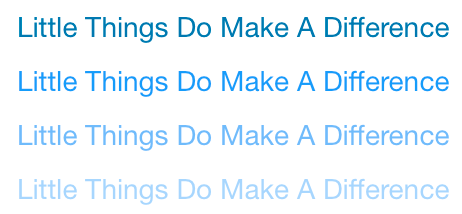
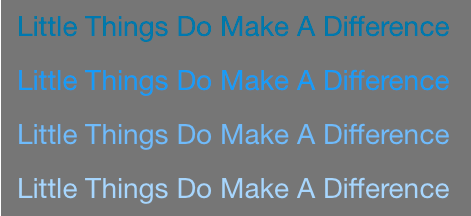
4. Videos and other multimedia formats without accessible features.
As with images, videos and other types of multimedia must include text or audio descriptions and captions so that people who are blind can understand what is happening in them.
As a remedy, the OCR began sending the dreaded OCR letter asking schools to revise
their digital presence so that all students had the same level of access to information.
What is an OCR Letter?
Colleges and universities may receive an “OCR letter” when their website is not fully accessible to individuals with disabilities or fails to provide equal access to educational benefits and opportunities afforded by the technology. These letters are usually triggered by a complaint filed with the OCR against your school.
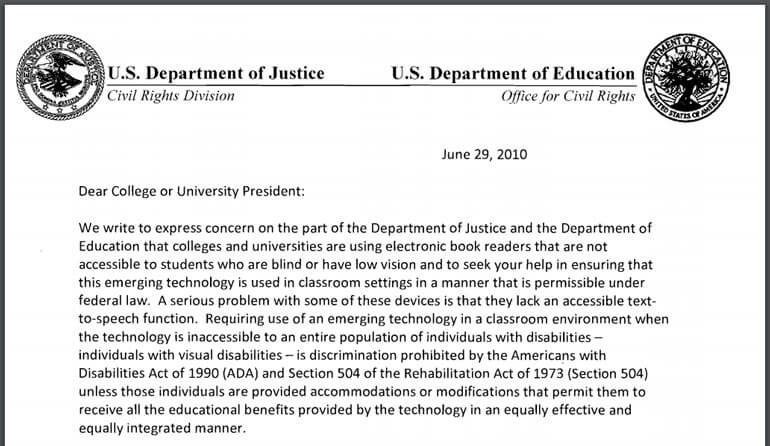
In 2010, colleges and universities received a letter from the OCR expressing concern about digital inaccessibility. The letter prompted academia to develop a plan for full digital accessibility so that all students have equal access to information.
What can your institution do to stay OCR compliant?
Receiving an OCR letter puts your school into a reactive mode, whereas you should be operating in a proactive mode to avoid receiving a letter altogether. If this happens to your school, get ready to fully address all concerns that the OCR might have about your school’s digital compliance—and more.
- Upon receipt, ask for an Early Complaint Resolution (ECR) and agree to resolve all potential issues on your website as soon as possible. If compliance is not possible or if there will be a lengthy time frame for reaching compliance, negotiate by creating a plan that outlines your steps toward full accessibility. This doesn't necessarily get your school off the hook; it simply shows the OCR that you are aware of and willing to make changes toward digital accessibility.
- Review your website using both manual and automated processes to find gaps in your accessibility compliance. Modern Campus CMS Final Check and the Modern Campus CMS Insights module are two powerful tools to help you assess and remedy accessibility issues and maintain compliance.
- Add an accessibility notice to your website stating that your college or university is working diligently to address accessibility issues.
- Research current WCAG 2.1 standards so that you can anticipate issues before they occur.
- Implement best practices for digital accessibility throughout your campus.
Request a free website accessibility check today!
Find out how Modern Campus CMS helped Southeastern Community College resolve ongoing accessibility issues.
Resources for OCR Compliance
Don’t go it alone. There are myriad resources to help your college or university become and stay compliant with accessibility laws. Here are a few to get you started.
Web Accessibility Resources
- Morality of Accessibility article from Inside Higher Ed
- Eric Meyer’s Compassionate Design video
- Penn State’s helpful guide to accessibility and usability
- Free WAVE tool as a second check for evaluating the accessibility of your web content
OCR Resources on Compliance
- Disability Rights: Enforcement Highlights from the Office for Civil Rights
- OCR Disability Discrimination pamphlets
- Disability Discrimination Case Resolutions
- 3PlayMedia’s 3 “Dear Colleague” Letters You Should Read About Inaccessible IT in Higher Ed
- How to Respond to a Letter from the OCR from the Bureau of Internet Accessibility
- University of Washington’s roundup of Resolution Agreements and Lawsuits from institutions that have faced legal action related to inaccessibility of their information technology
OCR Compliance in Higher Ed
- Inside Higher Ed’s article on the Faculty Role in Digital Accessibility
- Chronicle of Higher Education’s story about one activist targeting schools with inaccessible websites for people with disabilities
- eQAfy’s research tools for testing higher ed website accessibility
Conclusion: OCR compliance is crucial to your university’s success.
Digital accessibility is an issue that must be addressed immediately and thoroughly if your school wants to avoid penalties and even lawsuits.
To address specific concerns, ask for assistance from the U.S. Department of Education’s Office for Civil Rights by emailing OCR@ed.gov or calling 800.421.3481.
Another way to boost your accessibility efforts is to request a free accessibility scan of your website to identify accessibility gaps in your institution’s digital presence.
You can also download our whitepaper The Complete Guide to Digital Accessibility Compliance for Colleges and Universities to get started right away on your website accessibility efforts.
The Complete Guide to Digital Accessibility Compliance for Colleges and Universities
Last updated: February 5, 2021



